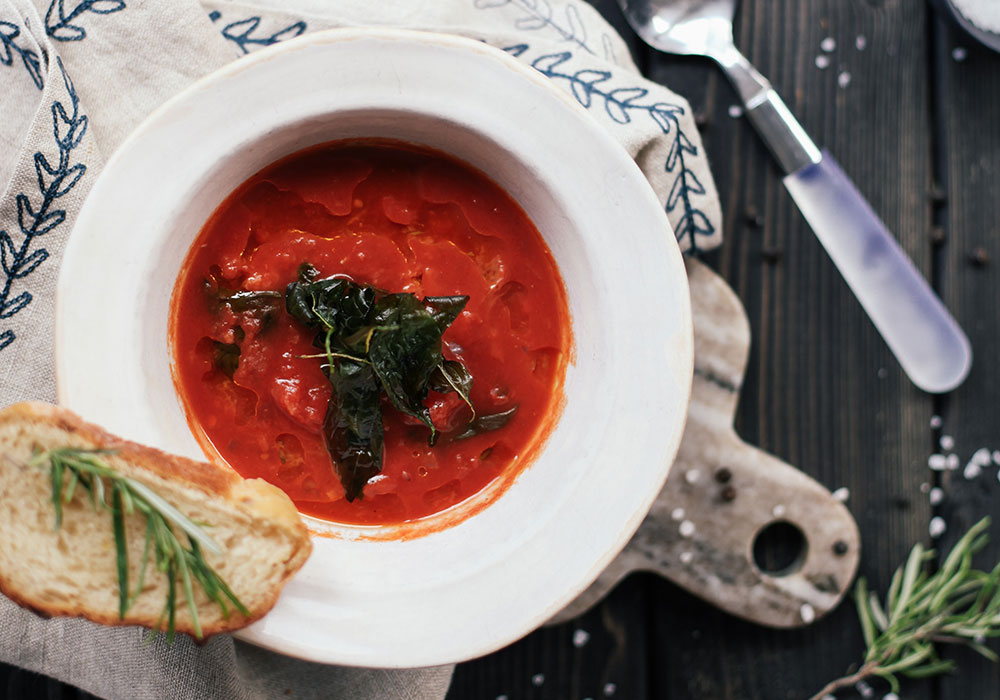Soup. Glorious Soup. Warm concoctions of vegetables, broth, and spices feel nurturing and satisfying to both body and soul. During times of illness and recovery, certain food, like soup, can be good medicine. Nourishing and sustaining us, food is powerful medicine, as we struggle to heal and regain our strength.
Food as Medicine
The concept of “food as medicine”¹ is growing among a small number of insurers in an effort to control healthcare costs. Such efforts are proving successful as highlighted in recent studies.
- In Health Affairs², when medically tailored meals are provided there are fewer emergency department visits, fewer inpatient admissions, and lower medical spending in comparison to a control group.
- Another study in the American Journal of Managed Care³ reveals similar benefits. Patients receiving tailored meals show a drop in hospital readmission rates and dramatic cost savings compared with patients without the specially tailored meals.
Unfortunately, such programs are currently limited to specific geographic areas. Expansion of these programs will require a shift in the medical model of how we pay for health care and how it is provided. Given success rates to date, it would be encouraging to see such efforts expanded to other geographic areas and broadly supported by insurance companies.
Food as a Gift
Food is also a gift. Sometimes, when someone you know is not feeling well or may even be facing a serious health challenge, we just don’t know what to do. Foods, such as soup, are often welcomed because planning and preparing meals can be difficult during times of illness. And quite simply, food is good medicine.
As discussed in another post, soup can be a great way to show you care. However, at the tail end of summer, a hot soup on a blistering, sultry day may not be a great choice. Fortunately, the end of summer also brings a plentiful supply of fresh tomatoes. And fresh tomatoes are a great opportunity to make gazpacho. A soup from Southern Spain, gazpacho is particularly refreshing since it is served chilled.
Gazpacho
Julia MoskinIngredients
- 2 lbs Ripe Red Tomatoes Cored and roughly cut into chunks
- 1 Cubanelle Pepper Seeded and cut into chunks
- 1 Cucumber About 8 inches long, peeled and roughly cut into chunks
- 1 Mild Onion (white or red) Small, peeled and roughly cut into chunks
- 1 Garlic Clove
- 2 tsps Sherry Vinegar More to taste
- Salt
- .5 cups Extra-Virgin Olive Oil More to taste, plus more for drizzling
Instructions
- Combine tomatoes, pepper, cucumber, onion and garlic in a blender or, if using a hand blender, in a deep bowl. (If necessary, work in batches.) Blend at high speed until very smooth, at least 2 minutes, pausing occasionally to scrape down the sides with a rubber spatula.
- With the motor running, add the vinegar and 2 teaspoons salt. Slowly drizzle in the olive oil. The mixture will turn bright orange or dark pink and become smooth and emulsified, like a salad dressing. If it still seems watery, drizzle in more olive oil until texture is creamy.
- Strain the mixture through a strainer or a food mill, pushing all the liquid through with a spatula or the back of a ladle. Discard the solids. Transfer to a large pitcher (preferably glass) and chill until very cold, at least 6 hours or overnight.
- Before serving, adjust the seasonings with salt and vinegar. If soup is very thick, stir in a few tablespoons ice water. Serve in glasses, over ice if desired. A few drops of olive oil on top are a nice touch.
Notes
- Plan ahead! This soup is best when it is chilled so making it requires some planning. (Six hours according to the recipe.)
- The cubanelle pepper is a sweet pepper. A good substitute for a cubanelle pepper is an Anaheim pepper which has a little more heat but, is generally mild. The first few times I made this recipe, I used a jalapeno pepper which added too much heat. The best batch of gazpacho I made all summer was when I used an Anaheim pepper. Recently I’ve used Poblano peppers, since they were on hand, which adds more heat than an Anaheim but are not as hot as jalapeno peppers.
- Instead of the Sherry Vinegar, I’ve used Red Wine Vinegar, which seems to work. Although, if I ever make the recipe with Sherry Vinegar I may never go back, it might be just that good.
- My version does not contain the full allotment of salt, more like one teaspoon rather than two.
- The first few times I used this recipe, I held back on the olive oil but I think the soup really needs the full ½ cup.
- So far, I haven’t had to work in batches. I stuff my blender to the top and watch the magic happen.
- Straining the mixture through a food mill or a strainer seems like a messy, unnecessary step that only takes out nutrients which I prefer to leave in. I like the small bits in the soup because I think it adds interest.
- I also serve the soup in bowls rather than in glasses since I’d rather spoon my soup than drink it from a glass.
- Toppings! This particular recipe does not call for toppings on the gazpacho (other than the mention of olive oil drizzled on top) but I know gazpacho toppings are common and should be considered if you prepare this recipe. Here are some topping suggestions: chopped green pepper, red onion, cucumber, roasted corn, avocado, hard-boiled egg, capers, or yogurt.
Final Words
Sam Sifton, food editor of The New York Times writes, “Today, then, would be a good one to cook for others, … to take note of how in giving to others we make our little worlds stronger and more full of joy.”⁵ So, with the bountiful supply of tomatoes available now at summer’s end, whip up a batch or two of this fabulous soup. Keep one and take one to a friend who may be in need of a little extra care.
¹Galewitz, P. (2018). Rx: Zucchini, Brown Rice, Turkey Soup, Medicaid Plan Offers Food As Medicine. Kaiser Health News. https://dhn.org/newsrx-zucchini-brown-rice-turkey-soup-medicaid-plan-offers-food-as-medine/
²Berkowitz, S.A., Terranova, J., Hill, C., Ajayi, T., Linsky, T., Tishler, L.W. (2018). Meal Delivery Programs Reduce The Use Of Costly Health Care In Dually Eligible Medicare and Medicaid Beneficiaries. Health Affairs, 37(4). https://doi.org/10.1377/hlthaff.2017.0999
³Martin, S.L., Connelly, N., Parsons, C., Blackstone, K. (2018). Simply Delivered Meals: A Tale of Collaboration. American Journal of Managed Care. 24(6):301-304. https://www.ajmc.com/journals/issue/2018/2018-vol24-n6/simply-delivered-meals-a-tale-of-collaboration?p=1
⁴Moskin, J. (2018). Best Gazpacho. New York Times – Cooking. https://cooking.nytimes.com/recipes/1017577-best-gazpacho
⁵Sifton, S., (Sunday, Sept. 16, 2018). New York Times – Cooking. What to Cook This Week.



